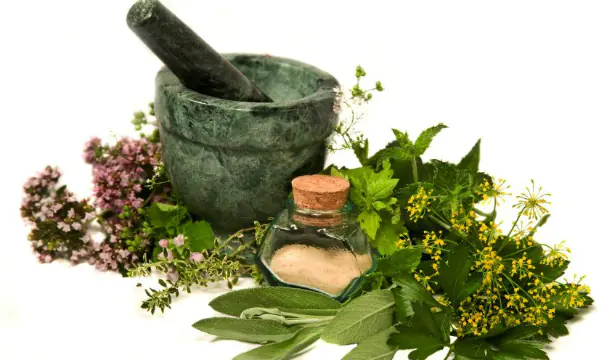Since May, we began to introduce our readers to the medicinal properties of some plants and trees. We are unlikely to be able to describe all the gifts of nature - after all, this is a colossal amount of information, worthy of the pages of several volumes of an encyclopedia. But we can introduce ourselves to what the world that surrounds us can give.
The effect of medicinal plants on the body
There are several hundred medicinal plants, and each of them has a certain effect on the human body. Here are some of their effects (only a few plants from which decoctions, infusions or preparations are made are indicated in brackets):
-
treat alcohol addiction (centaury, hoofed grass, creeping thyme);
-
contain antibiotics (onion and garlic juice, leaves, buds and juice of linden, plantain leaves, etc.);
-
stimulate appetite (chicory and dandelion root, aloe juice, cumin seeds, almond fruits and oil, wine from rosemary leaves, etc.);
-
relieve pain (chamomile herb, peppermint, St. John's wort, oregano and lemon balm; parsley roots and leaves, celery herb and root, linden blossom, etc.);
-
disinfect (garlic, radish root, sorrel leaves, etc.);
-
provide the body with vitamins necessary (onions, rose hips, rowan and black currants, birch and rhubarb leaves, pine needles, oak bark, carrot roots, etc.);
-
are anthelmintic (pumpkin seeds, strawberries, valerian root, drinking honey as tea, etc.);
-
stop bleeding (shepherd's purse and St. John's wort, nettle leaves, pine cones, etc.);
-
sterilize (plantain leaves, St. John's wort herb, honey (drink like tea));
-
weaken (black elderberry flowers, carrot root, water from pickled lingonberries, etc.);
-
strengthen (peppermint herb; buds, pine needles and pine resin; leaves of sorrel, honey (drink as tea), baths with lemon balm, etc.);
-
regulate menstruation (lemon balm herb, fresh aloe juice, parsley seeds, tansy color, nettle herb, etc.);
-
cause contractions of the uterine muscles and stop bleeding (bark of viburnum and Amur barberry, cuckoo adonis grass, etc.);
-
regulate metabolism (ginseng root, lemon balm herb, currant leaves, walnut leaves, dill herb, berries and strawberry herb, etc.);
-
preserve youth (blueberries, pine pollen, etc.).
Plants can also have a choleretic, expectorant, antipyretic and diaphoretic effect, lower blood pressure, regulate the functioning of the gastrointestinal tract and liver, induce and stop vomiting, relieve spasms, convulsions and swelling, excite, tone, etc.
General rules for collection and drying
It is best to collect plants for medicinal purposes in dry and clear weather. The buds are collected in early spring, during the period of swelling and before they bloom. For example, pine buds are cut from the branches with a knife, and smaller ones (birch buds) are cut along with the branches. They are dried by spreading them in a thin layer, and after drying, the branches are threshed or the buds are picked off by hand.
Grass and flowers are collected during flowering, roots - in the fall, when the above-ground part of the plant withers, or in early spring, when the stems and leaves of these plants begin to grow. Fruits and seeds are collected after they are fully ripe.
Dry the plants in a special dryer or outside in the shade, as well as in well-ventilated places (attics). The roots are most often washed before drying. Store dried plants in paper bags. The shelf life for herbs is one year, for roots, fruits and seeds – two years or even more. The storage room should be dry and cool.
Lunar phases and plant collection
The time of harvesting the plant (moon phase, time of day) also depends on the influence of the planet. We give only a general recommendation: it is better to collect rhizomes, roots and root crops in the first and third phases of the Moon. Second and fourth



